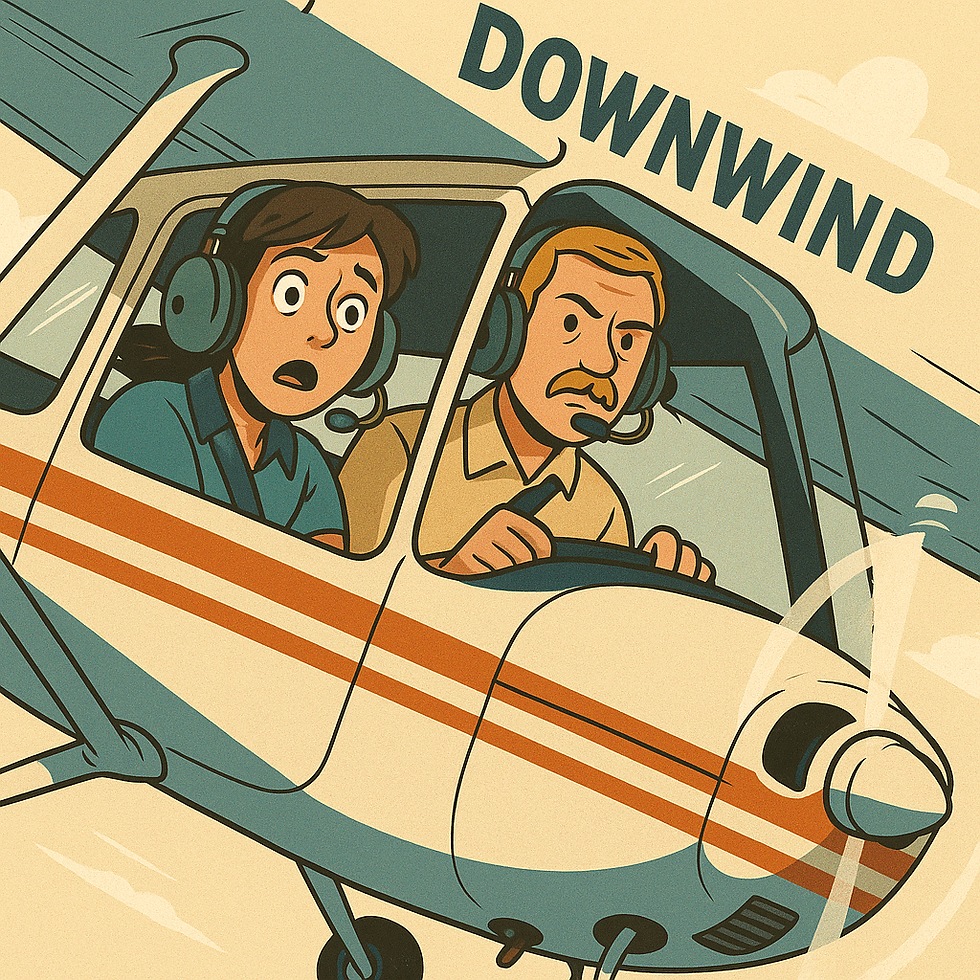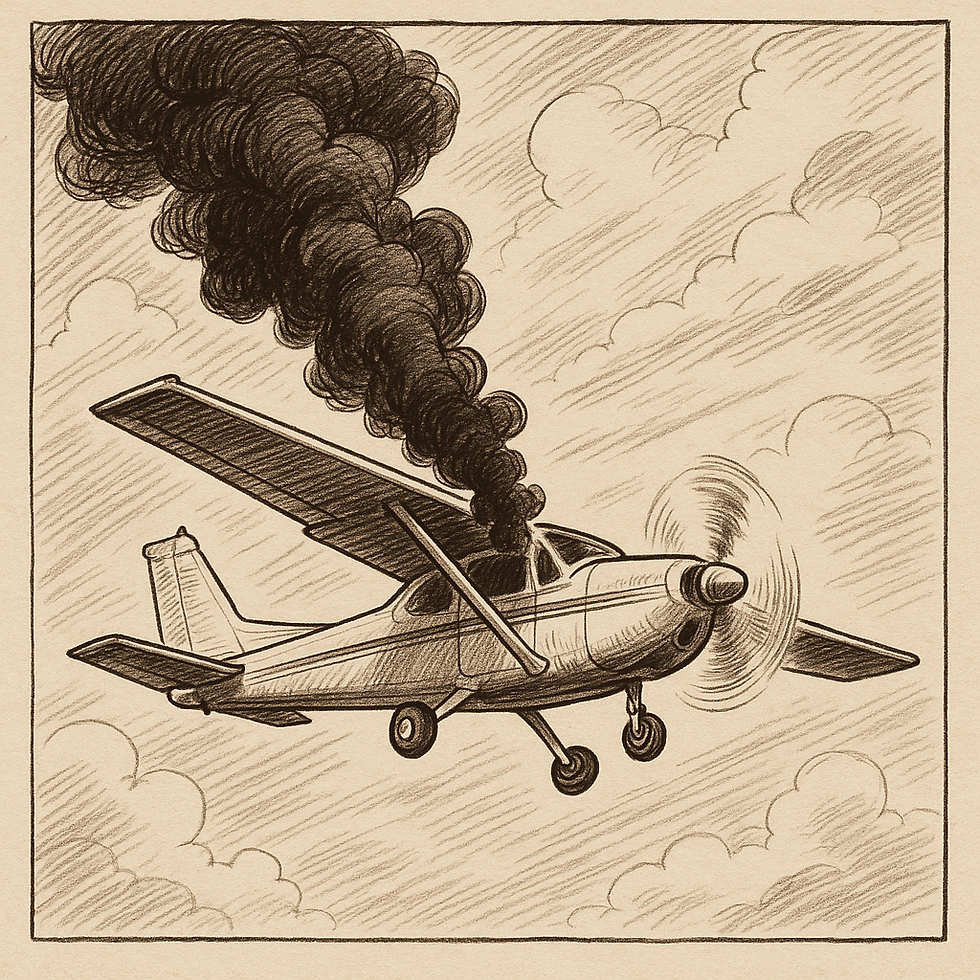“The Pattern Is Sacred: Airmanship, Safety, and the Discipline We Owe Each Other”
- Adam Glaysher
- Jun 30, 2025
- 2 min read
By Adam Glaysher

There’s a rhythm to the traffic pattern. -a harmony. A social contract unwritten but deeply understood by pilots who treat flying not just as transportation, but as an act of stewardship. Each call, each turn, each leg of the pattern builds toward one goal: get everyone on the ground alive and unscathed.
And yet—every once in a while—someone disrupts that rhythm. Not out of ignorance, but arrogance. Not because they don’t know the rules, but because they think the rules don’t apply to them.
Unsafe Entries, Unnecessary Risk
At non-towered fields, pattern entries are where safety either begins or falls apart.
It usually goes something like this: an aircraft approaches midfield at pattern altitude, announcing intentions for a “teardrop to downwind.” The problem? There’s already traffic in the pattern—aircraft turning crosswind, entering downwind, extending base.
And then, just like that, the sacred space becomes a collision course.
There’s no requirement to get clever in the pattern. The FAA provides clear, time-tested guidance:
“Inbound aircraft crossing midfield should overfly at least 500 feet above the traffic pattern altitude before descending to enter the pattern via a Teardrop maneuver to enter downwind leg on a 45 degree angle.”
This isn’t just a suggestion—it’s a safety buffer. A dome of protection for aircraft already in the pattern.
When a pilot disregards this and slices through the airspace at pattern altitude under the banner of “it’s a textbook entry,” they’re not just wrong. They’re dangerous.
Safety Is a Mindset
Aviation safety isn’t about checking boxes. It’s a posture of vigilance. A belief that our actions—no matter how small—have consequences.
When we treat the traffic pattern like optional choreography instead of sacred structure, we erode the very thing that keeps us from trading aluminum.
We owe it to one another to:
Enter the pattern using standard, recommended methods
Overfly at 500’ above pattern altitude before descending
Communicate intentions clearly and early on CTAF
Prioritize see-and-avoid, even when we think we’re “right”
The Problem with Cowboys
Every airfield has a few. The pilot who believes their hours somehow outrank good judgment. The one who “makes their own entry” or flies nonstandard patterns because “that’s how we did it in the Navy.”
Let’s be clear: this isn’t about experience. It’s about discipline.
True professionalism—whether you’ve got 50 hours or 5,000—means respecting the system. The pattern is not a test of creativity. It’s not a proving ground for dominance. It’s a communal zone of mutual responsibility.
There’s nothing noble about close calls, and nothing impressive about ignoring safety guidance.
Final Thoughts from the Inkpot
The pattern is sacred because it’s where lives converge. It’s a shared ritual, a final descent into trust. Pilots must enter with humility, discipline, and a laser-focus on safety.
So study the AIM. Respect the recommended procedures. Speak up on CTAF. And if someone disregards all of that in the name of bravado?
Steer clear. Teach your students to steer clear.
Because real airmanship isn’t loud. It’s careful. It’s predictable. It’s alive.
🖋️ Fly the pattern like someone’s life depends on it—because it does.– Adam, The Flying Inkpot



Comments